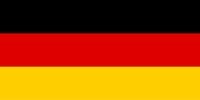Le parcours Gutenberg
STRASBOURG : LES DÉBUTS DE L’IMPRIMERIE
Strasbourg, situé sur la principale voie commerciale européenne à la fin du Moyen Âge, le Rhin, est au XVe siècle une Ville libre d’Empire.
Durant son séjour (1434-1444), Gutenberg y met au point l’art d’écrire artificiellement (ars.artificialiter scribendi) dont les intellectuels et la riche bourgeoisie locale sont des commanditaires avisés. Rapidement, Johannes Mentelin (1458) puis Heinrich Eggestein (1466) démarrent des presses ; Adolf Rusch introduit les caractères romains (1467) ; Heinrich Knoblochtzer systématise l’usage de gravures (1478), technique portée à sa perfection par Johannes Grüninger à partir de 1482.
À la fin du siècle, une douzaine d’ateliers fonctionnent dans ce centre majeur de la librairie dont les compagnons typographes comme les éditions érudites ou illustrées rayonnent dans le monde.
DIFFUSER LES IDÉES PAR L’IMPRIMERIE
Au XVIe siècle, au temps des troubles religieux, une majorité de la population se convertit au protestantisme (1524). Pamphlets et ouvrages de controverse fleurissent et sont exportés dans toute l’Europe tandis que Strasbourg devient un refuge pour les intellectuels français (Lefèvre d’Étaples, Calvin…). L’idée que la renommée de la ville doit reposer sur cette liberté d’esprit se développe. La création du Gymnase en 1538, promu au rang d’académie en 1566, puis d’université en 1621, conforte la présence d’intellectuels de premier plan et assure un rôle primordial aux éditeurs dont Johann Carolus qui publie le journal Relation (1605). Durant la Guerre de Trente Ans (1618-1648), Strasbourg, épargnée, devient la principale place éditoriale d’Allemagne (souvent
sous la fausse adresse d’Ateliers du Parnasse).
L’ÉVOLUTION DE L’IMPRIMERIE
Dès le XVe siècle, Strasbourg est un grand centre de l’imprimerie : après Gutenberg, la liste des imprimeurs est longue. Établis dans
le cœur de la ville, certains perdurent jusqu’au XIXe siècle (familles et dynasties d’imprimeurs).
Depuis l’invention de la typographie, l’évolution technologique des métiers de l’imprimerie, puis l’apparition du numérique, ont entraîné de grandes transformations. Le paysage de ces métiers a beaucoup changé, les grandes imprimeries ont quitté le centre
ville, de nombreuses autres ont disparu.
Aujourd’hui à Strasbourg, les arts graphiques trouvent leur prolongement sous la forme d’ateliers d’artisans, d’artistes ainsi que d’expériences associatives.
Le roadbook est téléchargeable :
Roadbook français

Le parcours Gutenberg
STRAßBURG : DIE ANFÄNGE DES BUCHDRUCKS
Straßburg an der wichtigsten europäischen Handelsstraße des Mittelalters, dem Rhein, ist im 15. Jahrhundert freie Reichsstadt. Während seines Aufenthaltes (1434-1444) entwickelt Gutenberg hier die perfektionierte Schreibkunst (ars artificialiter scribendi), deren avisierte Auftraggeber
Intellektuelle und das lokale wohlhabende Bürgertum sind. Schnell entwickeln Johannes Mentelin (1458) und anschließend Heinrich Eggestein (1466) erste Pressen ; Adolf Rusch führt die lateinischen Schriftzeichen ein (1467) ; Heinrich Knoblochtzer systematisiert die Verwendung von Holzschnitten (1478) ; diese Technik wird ab 1482 von Johannes Grüninger weiter perfektioniert... Ende des Jahrhunderts sind in diesem bedeutenden Zentrum für
Buchhandel rund ein Dutzend Druckerwerkstätten tätig, deren gedruckte ‘Gefährten, wie die Lehrwerke oder illustrierten Bände, sich in der ganzen Welt verbreiten.
VERBREITUNG DER IDEEN DURCH DAS DRUCKWESEN
Im 16. Jahrhundert zur Zeit der religiösen Aufruhre konvertiert die Mehrheit der Bevölkerung zum Protestantismus
(1524). Pamphlete und veröffentlichte Meinungsstreite erleben eine Glanzzeit und verbreiten sich in ganz Europa,
wohingegen die Stadt zu einem Zufluchtsort für französische Intellektuellen wird (Lefèvre d’Étaples, Calvin…).
Die Vorstellung, dass das Renommee der Stadt auf dieser Geistesfreiheit beruht, verbreitet sich. Die Gründung des
Gymnasiums im Jahr 1538, das 1566 in den Rang einer Akademie erhoben und später, 1621, zur Universität ernannt
wird, verstärkt die Präsenz hochrangiger Intellektueller und sichert den Verlegern eine grundlegende Rolle, darunter
Johann Carolus, der die Zeitung Relation (1605) herausgibt. Während des Dreißigjährigen Krieges (1618-1648) entwickelt sich das verschonte Straßburg zum bedeutendsten Verlagsort Deutschlands (oft unter der falschen Adresse
Ateliers du Parnasse).
DIE ENTWICKLUNG DES DRUCKEREIWESENS
Seit dem 15. Jahrhundert ist Straßburg ein bedeutendes Druckerei-Zentrum: Die Liste von Gutenbergs Nachfolgern ist lang. Im Herzen der Stadt gelegen bleiben einige bis weit in das 19. Jahrhundert hinein bestehen und bilden regelrechte Druckereifamilien und -dynastien. Seit Erfindung des Buchdrucks mit beweglichen Lettern haben die technologische Evolution der Berufsbilder im Druckwesen und anschließend das Aufkommen der Digitaltechnik einen großen Wandel mit sich gebracht. Die berufliche Landschaft
hat sich sehr verändert, die großen Druckereien sind aus der Innenstadt herausgezogen, zahlreiche andere sind ganz verschwunden. Heute erfährt die Graphische Kunst ihre Fortsetzung in Form von Künstlerateliers und -werkstätten sowie in Form von assoziativen Erfahrungen.
Roadbook herunterladen : Roadbook deutsch

Le parcours Gutenberg
STRASBOURG : THE EARLY DAYS OF PRINTING
In the 15th century, Strasbourg was a Free City of the Empire and was located on the main European commercial route, the Rhine. While staying in Strasbourg (1434 to 1444), Gutenberg came up with a technique of “artificial writing” (ars.artificialiter scribendi), which quickly drew the attention of wealthy local citizens and intellectuals.
Other printing-presses sprang up in the city in the wake of Gutenberg’s invention, including those run by Johannes
Mentelin (1458) and Heinrich Eggestein (1466). Adolf Rusch introduced Roman characters (1457), while Heinrich
Knoblochtzer initiated the use of woodcuts, a technique perfected by Johannes Grüninger as from 1482. By the end
of the century, there were a dozen or so printers operating in the city, and their illustrated scholarly works gained an
international reputation.
DISSEMINATING IDEAS THROUGH THE PRINTING PRESS
With the religious troubles in the 16th century, much of the population converted to Protestantism (1524). Pamphlets and controversial works flourished and found their way all over Europe, while Strasbourg became a refuge for French intellectuals, including Lefèvre d’Étaples and Calvin. The idea that the city’s reputation should be rooted in this freedom of spirit began to establish itself. The Gymnase school was created in 1538 and subsequently upgraded to an Academy in 1566, achieving University status in 1621.
This was a further gauge of comfort for leading intellectuals and secured the leading role of publishers such as Johann Carolus, who founded Relation (1605), the first newspaper. Strasbourg was spared the ravages of the 30 Years War (1618 to 1648) and became the publishing centre of Germany (often under the fake address of Ateliers du Parnasse).
THE DEVELOPMENT OF THE PRINTING PRESS
By the 15th century, Strasbourg had become a centre of printing, with Gutenberg in the vanguard of a long list of illustrious printers. Some of these families and dynasties, with their city-centre presses, would remain there right up to the 19th century. Since the invention of the printing press, the sector has undergone enormous changes, with the development of new technologies and the introduction of digital techniques. The biggest printers have now left the city centre, while many have disappeared. Graphic arts in the Strasbourg of today have found their home in artists’ and craftsmen’s studios and workshops and through
associations.
Download the roadbook :Roadbook english